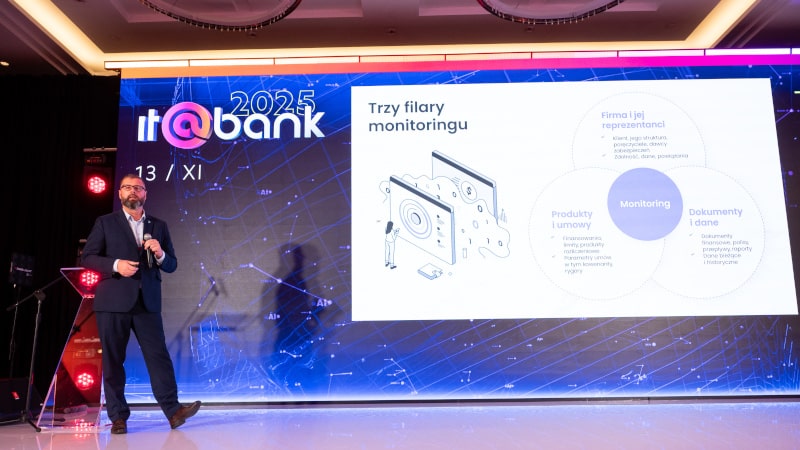One of the key activities supporting the stability and security of the functioning of large corporations, as well as small and medium-sized businesses, is the assessment of the credibility of customers/business partners and verification of their ability to meet their obligations.
So what should be included in the rating of business partners and how should the given rating be interpreted? I will try to answer this and some related questions in this article – I invite you to read.
Rating structure and rating scale
Company ratings are assigned to determine the financial credibility and credit risk of the rated entity in the short term (the next 12 months) and in the long term (more than 12 months). The given rating indicates the level of the expected risk that the entity will default on its financial obligations. It concerns both total and partial defaults. The ratings are synthetic assessments of credit risk defined in absolute terms, i.e. by applying ratings assigned to a fixed risk scale. A firm’s rating level takes into account an estimate of the Probability of Default (PD) and an estimate of the Loss Given Default (LGD).
The rating scale is most often based on letter markings – for example, rating agencies use four rating groups from AAA to D. It should be noted here that the total number of rating classes used within all groups already dependends on a given rating agency – usually around 20 classes are used. In comparison, in the banking sector, where the Internal Ratings-Based Approach (IRB) is the usual credit risk assessment method, internal dedicated rating scales and classes are used.
Components of the rating
Let us therefore proceed to the presentation of the key elements of the rating methodologies used in corporate creditworthiness analyses. Our many years of experience in providing dedicated credit risk assessment solutions for clients of various business areas, allows us to notice that the rating models used very often take into account the impact of financial risk, business risk and additional adjustment factors such as: size of the rated entity, trends the main sector of its activity, the market position of the entity against the industry and possible circumstances of default. The set of additional factors to assess may depend, amongst other things, on on the type of industry in which the entity operates (production, trading, services), the level of its revenue, and for group entities – the level of support from the group, as well as the risk of the country of operation. Corporate rating models typically consist of 4 main elements which I will describe below.
Quantitative assessment
Risk assessment models in most cases use a fundamental quantitative analysis based on a fixed list of financial ratios, based on the entity’s audited financial statements for the last three full financial years and financial forecasts (over a predetermined time period) to determine the entity’s ability to generate surplus cash and meet future repayments. The set of determined financial/quantitative indicators is usually divided into model (scored) and additional indicators. A common practice in this area is also to compare the results of the calculated indicators to industry data obtained from external services that provide this type of statistical data – in order to rank the assessed entity against the industry in which it operates.
The set of financial documents subject to analysis depends on the type of entity’s reporting in a given financial year. For example, for entities on full reporting, it includes a complete set of documents, such as: Profit and Loss Account (Pl. RZiS, Eng. P&L), Balance Sheet, Cash Flow Statement (Pl. MPC, Eng. CFS). The scope of the calculated ratios most often includes the assessment of liquidity, financing structure, working capital turnover and efficiency, profitability, the degree of interest-bearing debt and debt service capacity. The assessment of the company’s future creditworthiness is based on the leverage and debt service coverage ratios based on the forecasts of the balance sheet, income statement and cash flow statement.
Qualitative assessment
The qualitative assessment aims to include a set of additional factors in the rating assessment, e.g. the credibility of financial documentation, the quality of support and management, the impact of environmental factors, industry conditions, market position, competitiveness, quality of company management and trends in the company’s cash position. These aspects are most often assessed by means of dedicated surveys completed by analysts, in which individual answers are appropriately scored according to a fixed scoring matrix – usually dedicated to the size of the assessed entity (e.g. small and medium-sized businesses, large companies, corporations).
Behavioural assessment
Behavioural assessment concerns the current cooperation with a given client/contractor, and therefore it is performed for existing clients. The assessment itself is performed with the use of models analysing the past service of financial products (if the client has made such a commitment in the past). Behavioural assessment can be used both as a component of an entity’s rating and also, for example, to determine a new credit limit or modify an existing one – in the case of new products being offered or when extending the terms of an existing loan agreement.
Base rating and rating adjustments
The ratings described above are components of the underlying rating, often referred to as the base or system rating. Each of the above-mentioned ratings has an appropriate percentage share in the system rating – determining the proportion and impact of individual ratings (quantitative, qualitative and behavioural) on the base rating on the other hand is defined by a specific rating methodology assigned to the rated entity. Our experience shows that clients implementing rating models for risk assessment ultimately use several or more dedicated models/methodologies for corporate rating in their systems.
The system rating determined in this way is then subjected to additional assessments, which may eventually lead to a possible rating adjustment by several rating classes, both upwards and downwards. The applied rating adjustments may take into account, among other, the current status and timeliness of serviced liabilities (the case of possible default or exit from it), the current capital, technological, commercial, legal and financial support of its capital group and the potential impact of country risk on the effectiveness, stability, economic security and creditworthiness of the entity.
The individual character of the company may also be taken into account by limiting the maximum possible assessment of the company by the size of the entity, based on the assignment of the assessed company to a group of large, medium or small clients and the use of a matrix taking into account, e.g., the amount of capital and turnover of the coompany. The limitation of the rating may also be caused by other factors, i.e., risk resulting from the specifics of the main sector of its activity, its market position compared to other entities in the industry (exceptional, above average, average or below average).
The rating determined after taking into account the required limitations and adjustments becomes the final rating of the company. Such a rating is placed in the entity’s rating history and then monitored in accordance with the adopted rating verification policy – e.g. on an interim or annual basis. Monitoring may also be performed upon request when an important premise (i.e. an early warning signal) is identified that indicates a significant change in the financial, economic or business situation of the entity.
Summary
At VSoft, we have been providing our clients with support in the field of comprehensive rating of enterprises for over 25 years. Our proprietary VSoft Rating solution, supported by a set of connectors for key databases and external systems, has been successfully implemented in many configurations, ranging from medium-sized companies to the largest banking institutions in Poland. The VSoft Rating platform provides our customers with a central place for risk assessment, at the same time giving the possibility of its free development, both in terms of new sources of data acquisition, as well as the creation of new dedicated rating models. What’s more, thanks to additional automatic handling modules, the platform ensures that the rating will be performed on time, and thanks to the mechanisms of cyclical monitoring of the rating, it will always reflect the current situation of the rated entity.
Darek has been working at VSoft for over 15 years, he is currently a business solutions architect, creating solutions in the areas of selling credit products and credit risk assessment. Previously, a programmer, leader and manager of the software department responsible for the implementation and development of solutions for the financial sector clients. At work, he combines technical knowledge with business knowledge, focusing on simple solutions adapted to the changing business needs.




